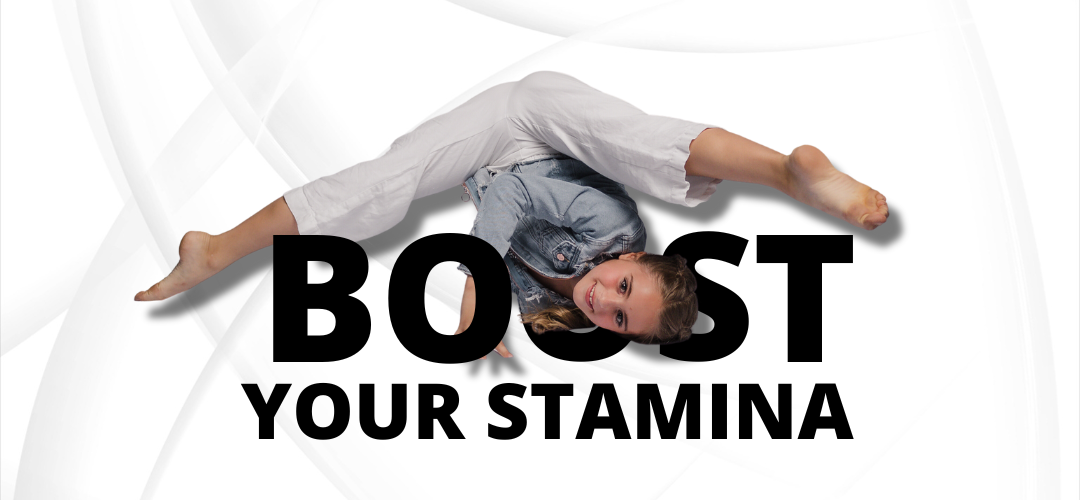6 Tips For Boosting Your Stamina While Dancing

As a dancer, have you ever found yourself gasping for air during your performance?
Even if you have rehearsed your routine countless times before, performing on stage can still feel challenging. Nerves, adrenaline, and the stage size can all take a toll on your stamina, leaving you feeling like you’ve run a marathon. This is because conventional dance training doesn’t always focus on the cardiovascular aspect of performing. However, there are ways to build up your stamina so you’re able to dance stronger for longer. Keep reading for six tips for boosting your stamina while dancing.
Consistent training.
The most obvious way to build stamina is to train consistently. Just as a runner needs to practice regularly to build up endurance, dancers, too, need to practice their routines consistently. This will help you develop cardiorespiratory fitness, which is the ability of the heart and lungs to deliver oxygen to the body during physical activity. A study published by the Journal of Dance Medicine & Science found that dancers who engaged in regular aerobic exercise had better endurance and cardiovascular function than their peers who didn’t.
Cross-training.
Cross-training is another effective method for building stamina. It involves engaging in different forms of physical activity to strengthen your body in different ways. For example, swimming or cycling can give your legs a break from the constant impact of dancing while still improving your cardiovascular fitness. Incorporating other forms of exercise can also help prevent injury and improve overall fitness levels. Some other forms of suitable cross training includes:
- Yoga
- Medicine balls
- Resistance bands
- Suspension training
- Cardio
Interval training.
Interval training involves alternating between high-intensity exercise and periods of rest. It is a great way to build endurance and cardiovascular fitness. During an interval workout, you push yourself to the limit for a certain period of time and then rest for a shorter period before repeating. This helps to strengthen your heart and lungs, as well as build endurance. You can try incorporating interval training into your dance classes by doing short bursts of high-intensity dancing followed by a brief rest period.
Breathe with intention.
When your breathing becomes uncontrollable during dancing, regaining control can feel extremely challenging. However, there are a few techniques that can help. One common recommendation is to focus on your breath by inhaling through your nose and exhaling through your mouth. However, the key is to find what works best for you, allowing you to take full and deep breaths. In fact, you can even choreograph your breath, synchronizing it with your movements, similar to what you would do in a yoga class. So, take a moment to pay attention to your breath and make it an integral part of your dance routine.
Proper nutrition.
Proper nutrition is essential for building stamina. Dancers require a lot of energy to perform on stage, and eating a well-balanced diet can help ensure you have the energy you need to dance at your best. A diet rich in carbohydrates, protein, and healthy fats can give you the fuel you need to power through a performance. It’s also important to stay hydrated before, during, and after performances to maintain optimal performance and prevent muscle fatigue.
Mental preparation.
Lastly, mental preparation is critical for building stamina. Nerves and anxiety can quickly deplete your energy, leaving you exhausted before hitting the stage. One way to combat this is to practice visualization techniques. Spend time visualizing yourself performing flawlessly on stage, and imagine yourself feeling energized and strong throughout your routine. Mental preparation can help you approach performances with a positive mindset and renewed energy.
Building stamina for dancing requires consistent training, cross-training, interval training, proper nutrition, and mental preparation. By implementing these methods, you can perform with greater endurance and less exhaustion. Just as you wouldn’t expect a runner to compete in a marathon without training, dancers must also focus on building up their cardiovascular endurance. With hard work and dedication, you can dance stronger for longer and give a performance that will leave your audience breathless.
